Spiritual Walks to Follow this Christmas
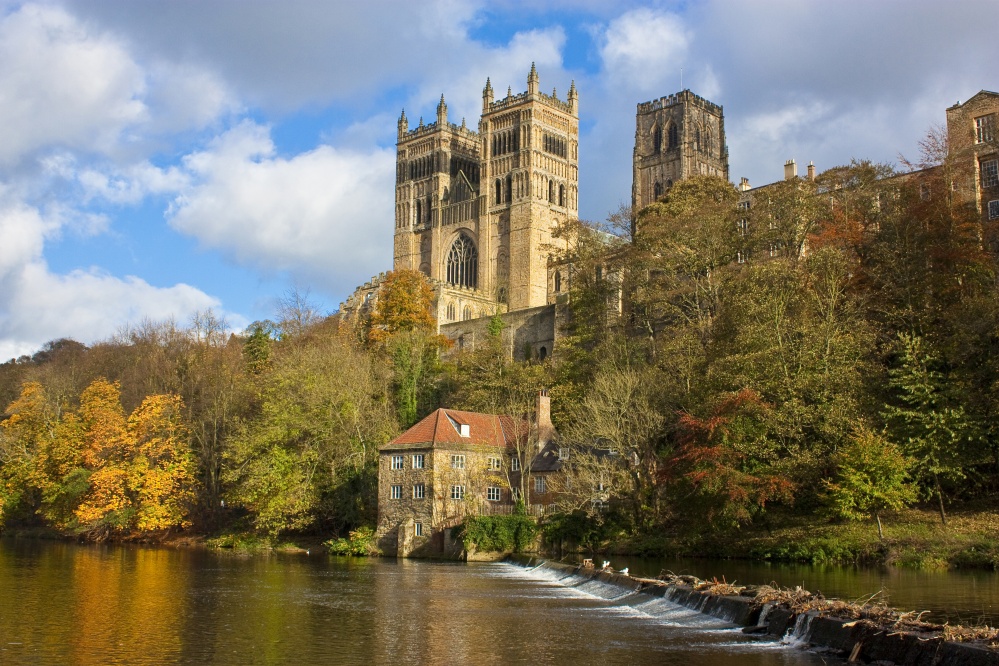
It’s Christmas! The perfect time to head out and explore some of our favourite places with a spiritual connection
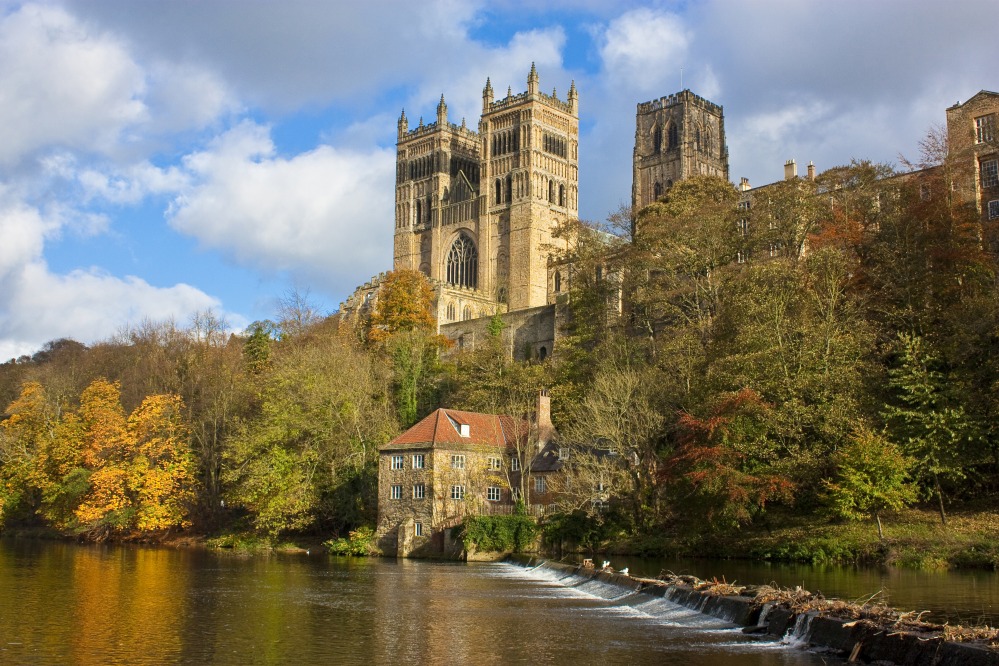
Author Bill Bryson once called Durham Cathedral ‘the best cathedral on planet Earth,’ and it’s hard to argue with that. This Norman cathedral contains the remains of two saints: St Cuthbert and the Venerable Bede, a monk and scholar who lived in the 7th and 8th century. The Galilee or Lady Chapel is home to the tomb of the Venerable Bede and, built between 1175 and 1189, this was the only place women could worship in the cathedral during monastic times. The Chapel of Nine Altars was built between 1242 and 1290 to help accommodate the crowds of pilgrims visiting the shrine of St Cuthbert. Today there are three working altars in the Chapel dedicated St Margaret, St Hild and St Aidan. While you’re exploring don’t miss the magnificent Rose Window – a 19th century reworking of its medieval predecessor above the chapel or the Cloister which you’ll recognise from TV and films – most notably the Harry Potter series. If you’re feeling fit, head up the 325 steps of the cathedral tower for unrivalled views over the historic city.
The cathedral’s family-friendly Woodlands & Riverbanks Photography Trail takes you along the surrounding picturesque riverbanks where you can discover more of our heritage. The trail is around one and a half miles long with plenty of photo opportunities (including the cathedral’s famous Sanctuary Knocker). Starting at the cathedral, leave the main entrance and face the castle, then pass Durham University’s Music Department and take a left down Windy Gap, heading down to the riverbank past the Old Fulling Mill, following the path down to the river. Continue past the big willow tree (after taking your photos of course), to the Storyteller’s Chair (Colin Wilbourn’s Kathedra stone sculpture) and under Prebends’ Bridge, around to the Count’s House. Dating back to the 1800s, it’s believed to have been built for Polish resident, Joseph Boruwlaski, who called himself ‘Count’. He’s buried at the cathedral. The last stop on the trail is the famous view across the river towards the cathedral – before heading back to share your photos. If you’re looking to refuel, we recommend The Half Moon Inn on New Elvet, which was chosen by the BBC to be featured in their George Gently series.
The cathedral is open Monday to Saturday 10am–4pm and on Sundays 12pm–4pm. As a working church, sometimes access to the cathedral is limited for visitors – please always check online in advance.
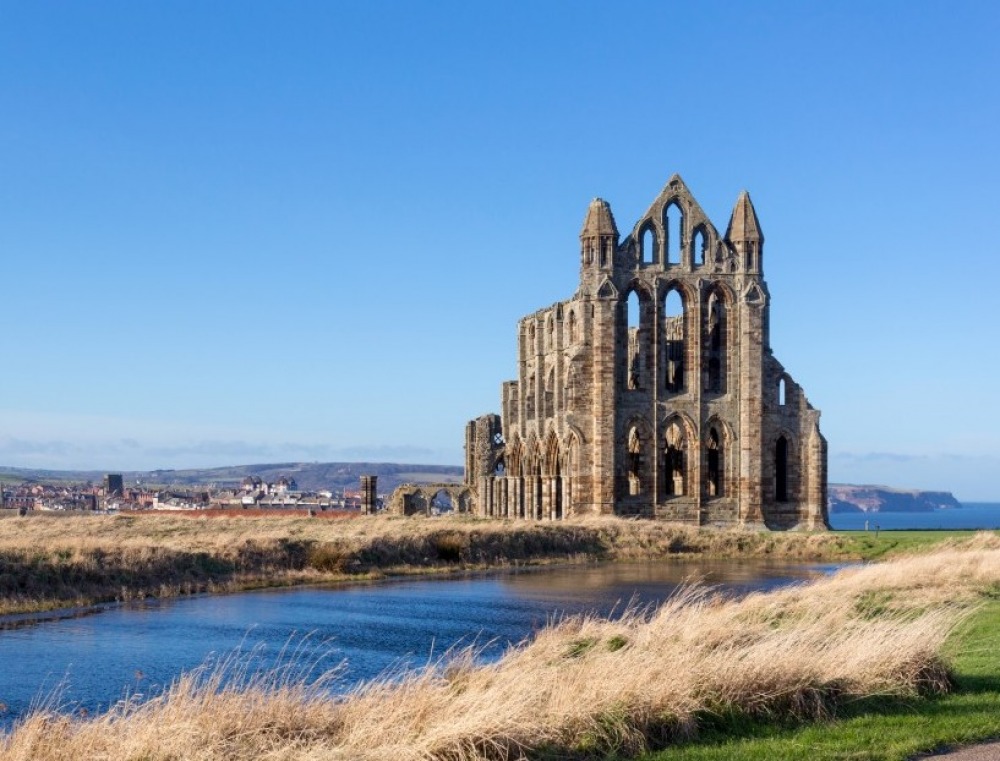
Not only can you follow in the footsteps of religious leaders here – famous artists and writers have links to Whitby Abbey too. While we could fill these pages with the history and inspirations behind Bram Stoker’s Dracula, it’s pioneering abbess St Hild we’re focusing on this Christmas. She hosted the 7th century Synod of Whitby here, where church leaders decided the English Church should follow Roman rather than Celtic practices. Under her guidance, several members of Whitby’s monastic community became important figures. Five of her monks even became bishops – Bosa, Aetla, Oftfor, John of Beverley and Wilfrid.
Our next religious link comes from around 1078 when Reinfrid, a monk, founded a new monastic community at Whitby. This community split and each part developed into a fully-fledged Benedictine monastery: one on the headland at Whitby and the other at St Mary’s Abbey, York. The shell of the abbey church at Whitby was almost complete until the 18th century but erosion from wind and rain has been its enemy. The south transept, most of the nave and the central tower collapsed during the 18th and 19th centuries.
Although now ruined, there’s still plenty to discover at the abbey – and who doesn’t love a walk around wonderful Whitby? Park in the Abbey Headland car park, then head across the grass to the abbey. You can uncover centuries of history with the new interactive guide here, and visit the revamped museum to find out more. The visitor centre is housed in a 17th-century mansion where you’ll find Anglo-Saxon crosses and medieval manuscripts. This Christmas, the whole family can explore Whitby Abbey on their festive adventure quest where you’ll follow the trail, find the clues, and discover the abbey's real secrets. Once you’ve explored the abbey, don’t miss St Mary's Church as you head towards the famous 199 steps. This Anglican parish church’s graveyard was used as a setting in Dracula. When you head down the famous steps, follow Church Lane to Church Street where you’ll find W Hamond – the original Whitby Jet shop, made so popular in Victorian Britain. Continue on Church Street, take a right on Bridge Street and a right on Sandgate and follow the road until you reach Abbey Wharf on Market Place – a perfect place for seafood lovers to refuel as you take in the harbour views. Alternatively, pick up fish and chips at the renowned Magpie Café, or check out Andrew Pern’s Whitby outpost Star Inn the Harbour, then simply retrace your steps back to the car park.
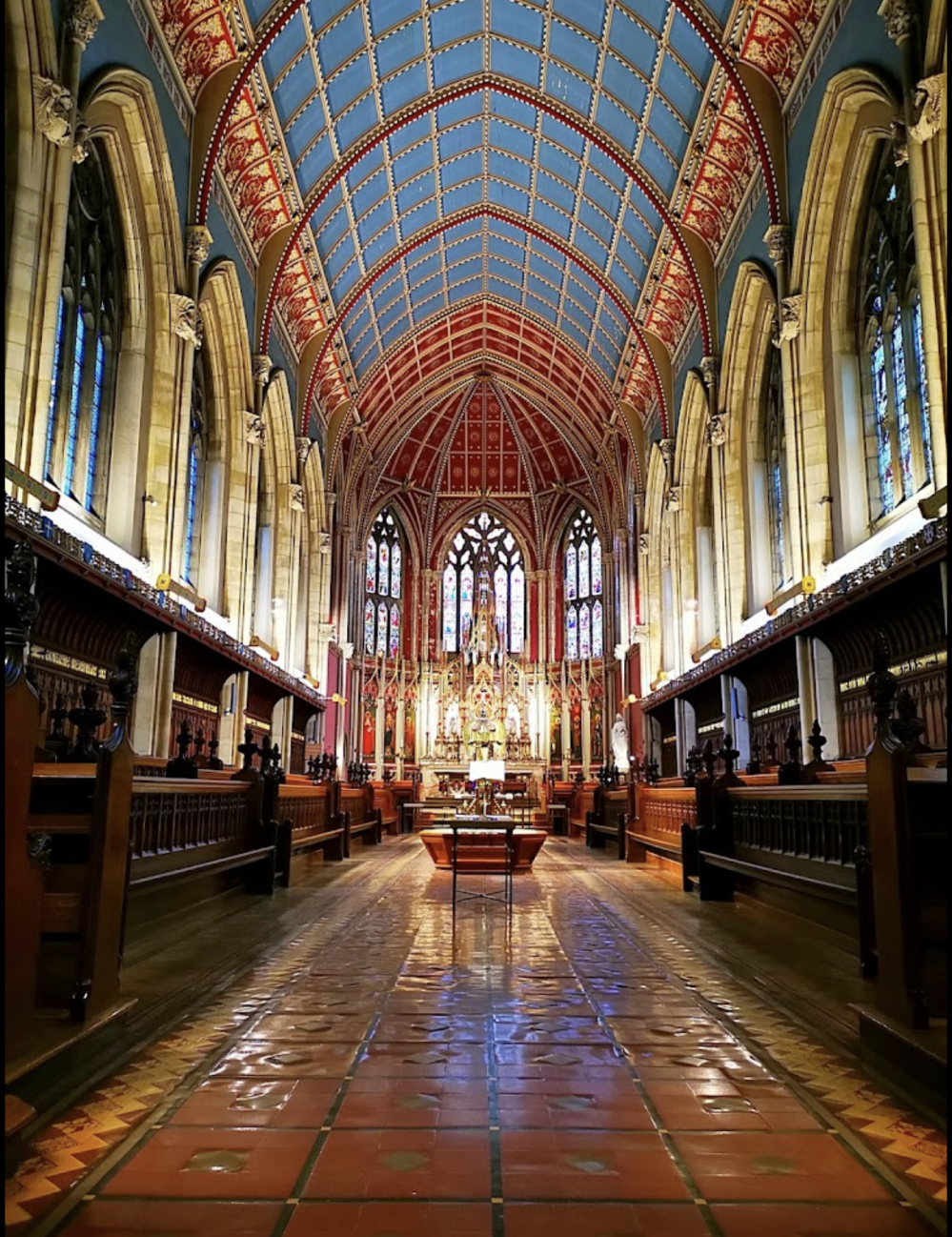
Ushaw's history is also rooted in our Christian heritage, beginning with St Aidan. More than 200 years ago, Ushaw’s historic house, chapels and gardens were built near the village of Ushaw Moor, County Durham, as a catholic seminary. Afraid of local reaction, Bishop William Gibson decided to plant a long row of protective beech trees and built a Georgian country house in the hope of disguising the seminary’s true purpose. As things improved for catholics during the 19th century, Ushaw expanded and became the breathtaking estate you can visit today – there are a total 14 chapels to explore.
A winter walk around Ushaw’s park and gardens is picture perfect; there’s even a selfie spot in front of the main house, St Cuthbert’s Chapel and the library. Some historians may tell you ‘Ushaw’ comes from the Anglo-Saxon term ‘Ulfs Shaw’ meaning Wolf’s Wood – and the three-mile circular route around the estate is a great woodland walk, although it’s unlikely you’ll see any wolves. Start at the main house with views across the surrounding countryside, and stroll through those beech trees we mentioned, then refuel at the Bounds Café where there’s a space for your children to play – dogs are welcome too.
Ushaw’s house, chapels and indoor exhibitions are open Thursday to Sunday 1pm—4pm. The gardens, grounds, outdoor exhibitions and Bounds Café are open daily 10am—4pm. Check online for any changes during the Christmas period.
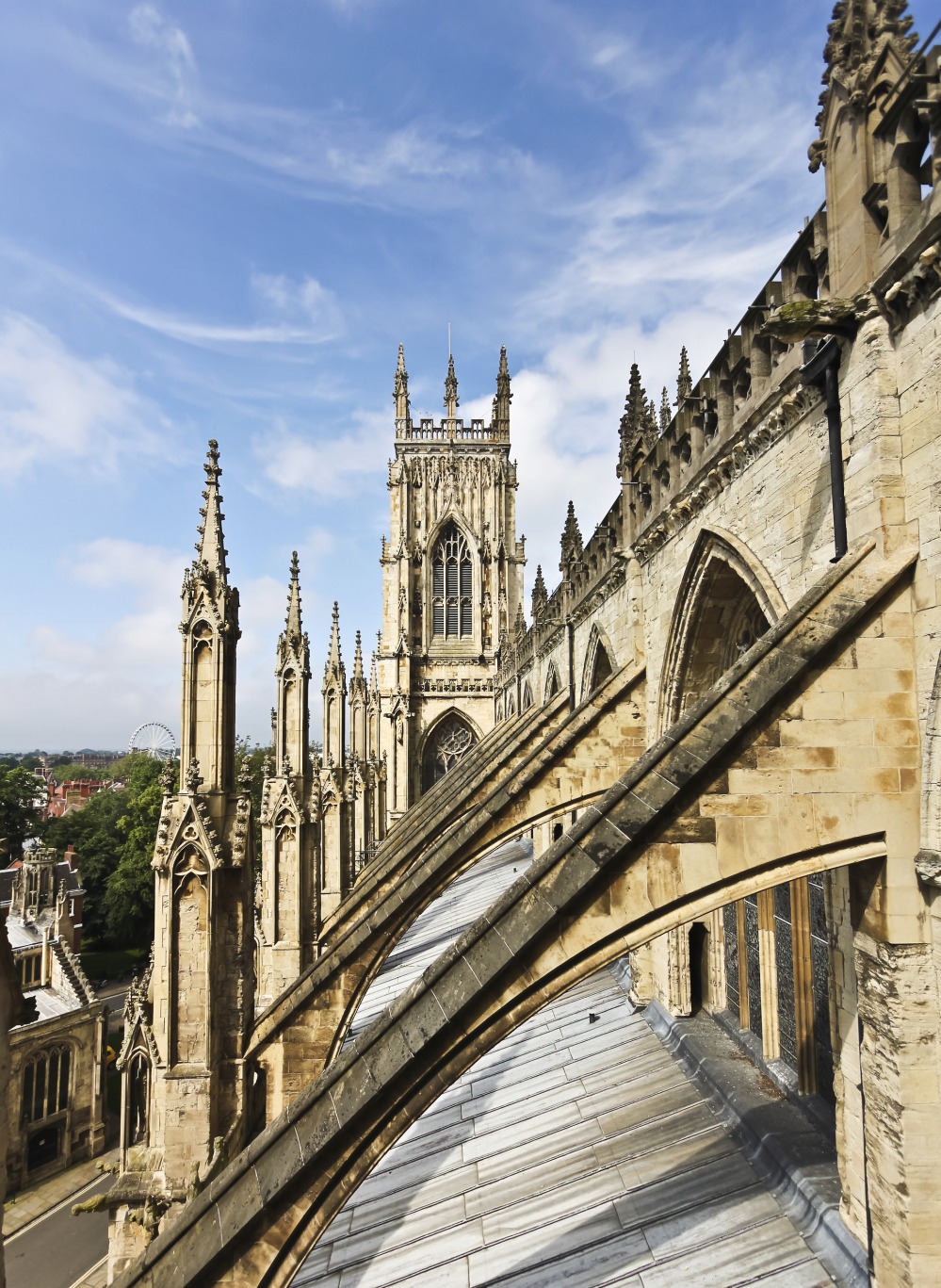
Since the 7th century, the Minster has been at the centre of Christianity in the North, and it has attracted visitors from across the globe for more than 1,000 years. In 625, King Edwin married the Christian princess Ethelburga, and Edwin was baptised into Christianity in a small wooden church. Historians say a stone church was built around that wooden church and, when Edwin was killed in battle, he was buried in the new church. Archbishop Thomas of Bayeaux began building a completely new cathedral after the Minster was burnt during the Harrying of the North in 1069, and the Minster later expanded. Sadly, fire struck York Minster in 1753, 1829, 1840 and 1984 and between 1967–72, £2 million was raised for major engineering works on its structure. York Minster was one of the UK’s first cathedrals to introduce girl choristers and Dr John Sentamu became Archbishop of York in 2005 – the first person from a minority ethnic group to become an Archbishop in the Church of England. This year, the Minster has celebrated the return of the Grand Organ following another major £2 million refurbishment, the first on this scale since 1903.
It’s clear there’s plenty of history to discover here which is why the Minster is open for sightseeing, as well as for private and public worship. While the interior of the building shouldn’t be missed, York Minster’s Central Tower is the highest point in York and offers panoramic views of the city, just save some energy to climb the 275 steps to the top and once back down to earth, don’t forget to discover the 2,000 years of history in the Undercroft Museum. It’d be easy to spend your whole day in and around the Minster, but we do recommend strolling around the city walls for a further dose of history. Since Roman times, York has been defended by ancient walls which now offer an elevated walk around the city from the Minster in a loop. Refuel at The Habit Café Bar, just two-minute from the Minster (deli-type sandwiches, salads and fries await) or head to the hugely popular Skosh on Micklegate, with its buzzy atmosphere and sharing plate menus.
Visit yorkminster.org for up to date visiting times.
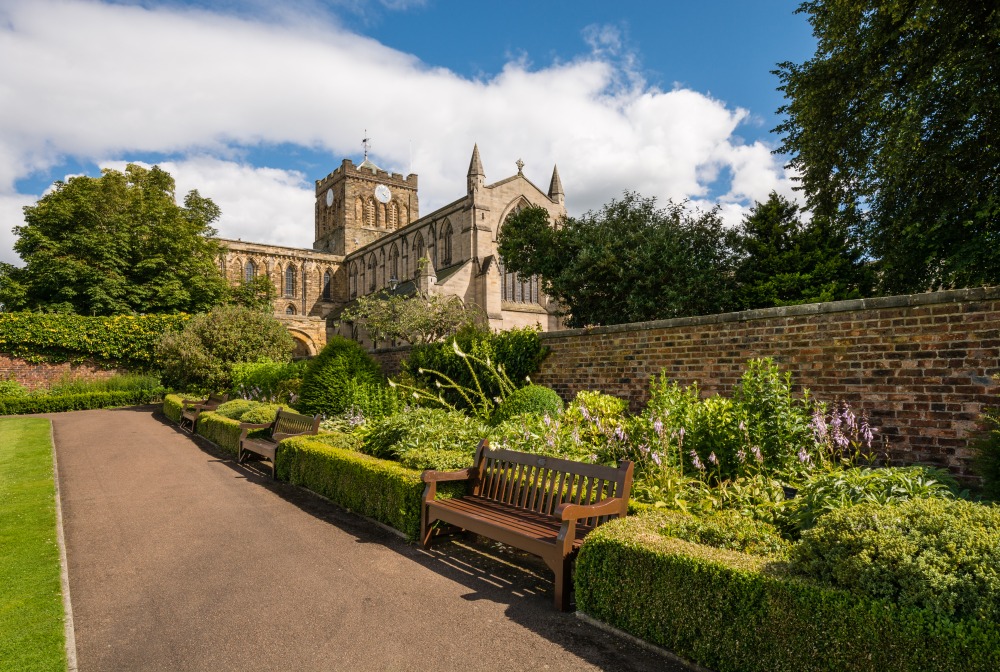
Hexham Abbey is a place of Christian worship dedicated to St Andrew (one of Jesus’ apostles according to the New Testament). It’s one of the earliest seats of Christianity in England, and has witnessed plenty of change over the years; with more than 1,000 years of history and culture within its walls. Since the Dissolution of the Monasteries in 1537, the abbey has been the parish church of Hexham. The six stunning lancet stained glass windows depict New Testament stories, and the apostles and their emblems. St Andrew, Hexham Abbey's patron saint, takes pride of place.
The abbey is picturesque from all angles, so why not circle around it? But if you head a little further out, you’ll discover some more peaceful paths. From the abbey, head along Beaumont Street to Battle Hill, then continue on St Wilfrid’s Road and past Elvaston Road and St Andrews Road to follow the walled pathway which curves down into the dene. The wooded dene has footbridges and grassy areas which direct you towards the reservoir embankment and a local nature reserve – Wydon Burn Reservoir. Circle back to the abbey and you can stroll around the grounds and the Sele, where you’ll find formal gardens with a traditional bandstand. Looking to refuel? Just a two-minute walk along Beaumont Street from the abbey, you’ll find The Beaumont – a Victorian townhouse hotel with fabulous views of the abbey, a popular bar and a great seasonal menu in the restaurant.
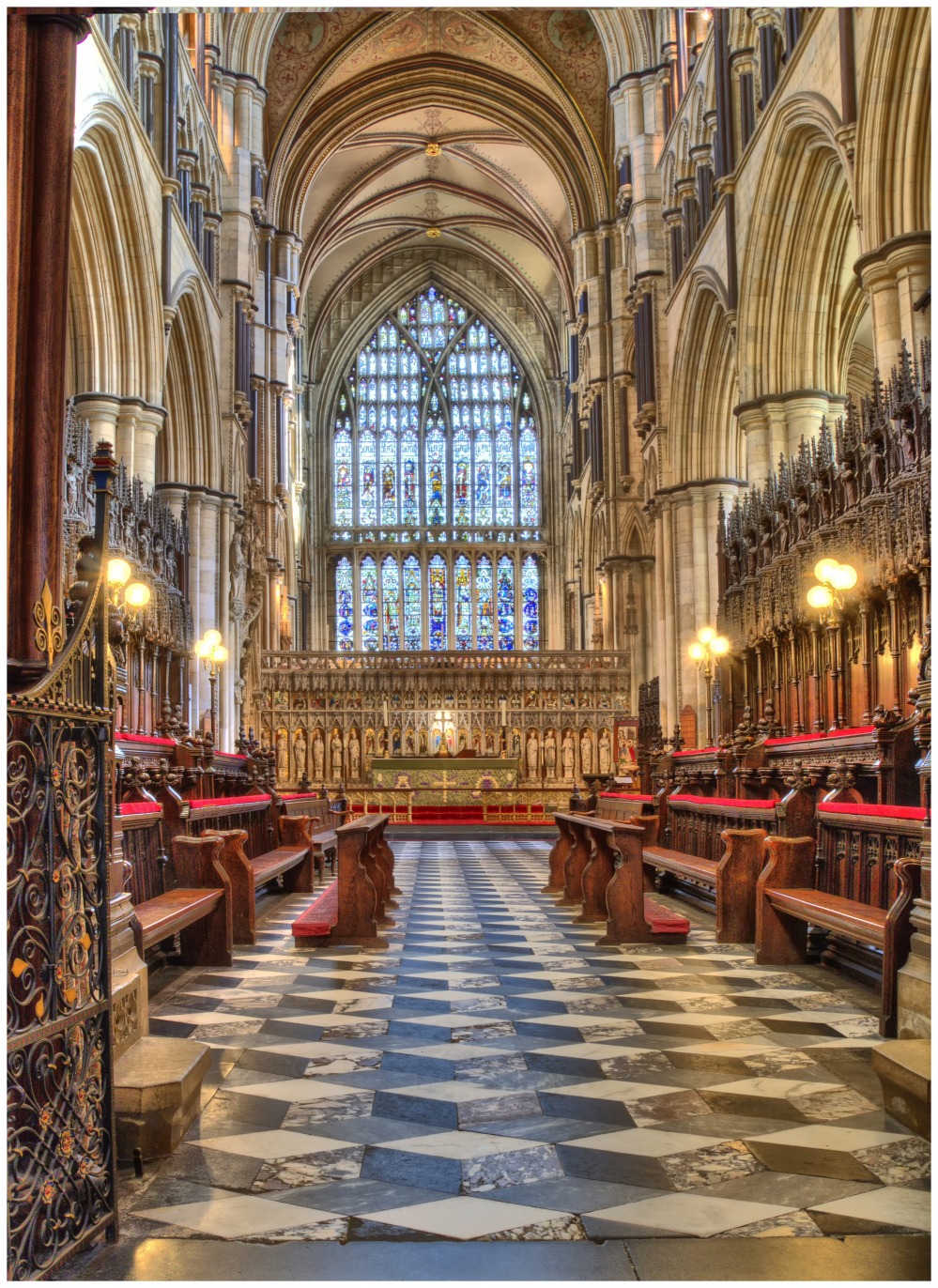
Beverley Minster (one of the largest parish churches in the UK) has been a holy place for more than 1,300 years and today’s community follow the tradition set by the first monks – prayer, service and care. It’s the parish church of St John (Bishop of York, who founded a monastery on the site where Beverley Minster now stands) and St Martin. John died in 721 and his body was buried in a chapel here. The church we see today was built around his tomb which has been visited by many pilgrims over the years. Today it’s not only a place of worship, there are also events for all the family, music, amazing architecture and lots of history to discover.
There’s plenty to see inside the Minster. The oldest object is the Sanctuary Chair which dates from the 8th century when St John founded the monastery. Medieval musicians can be seen in stone carvings throughout the building and large statues of St John of Beverley and King Athelstan are on either side on the south door. They were cast in lead in 1781 and later painted. Don’t miss Great John – the bell that chimes the hour. It dates from 1901, weighs more than seven tonnes and is over seven feet in diameter. For a leisurely walk from the Minster, follow Highgate past The Monk’s Walk then cross Lord Robert’s Road to Wednesday Market. Take a right on Tindall Lane, then a left on New Walkergate and follow the road round to North Bar Within. Turn right on York Road and left on Newbald Road and you’ll find yourself at Beverley Westwood where there’s a golf course, a racecourse and plenty of green space to stretch your legs (bring your dog too). This area has been used as farmland since the 11th century and has been managed by the town's pasture masters since 1836. It’s currently home to 30 different breeds of cattle. On your loop back to the minster, refuel at The Monk’s Walk – one of the oldest pubs in Beverley. This pub was built in the medieval period, with some parts dating back to 1270, or take a slight detour to The Westwood on New Walk, with its buzzy W Bar and well thought of restaurant serving great, locally-sourced food on a modern British menu.
Beverley Minster is open Monday–Saturday 10am–4pm and from noon on Sundays. Visitors are always welcome to attend services. Check their website for more details.







